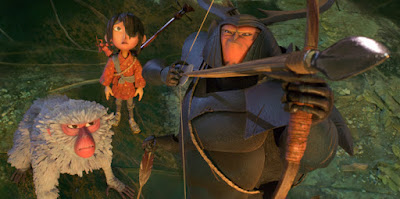3.5 stars. Rated R, for profanity, nudity, sexual content and strong sports violence
By Derrick Bang
Some sports champions, talent
notwithstanding, make themselves very
difficult to admire.
Ryan Lochte immediately comes to
mind. And Dennis Rodman. And, sadly, more than a few others.
Writer/director Jonathan
Jakubowicz’s Hands of Stone profiles
another such individual: Roberto Durán, widely acknowledged as one of the
world’s all-time greatest boxers. As Jakubowicz’s script suggests, Durán’s
skills in the ring couldn’t entirely offset an aggressive, unpleasantly
confrontational personality that resulted from a chip on his shoulder the size
of Pennsylvania.
Certainly he had cause, growing
up in Panama in the 1950s and early ’60s, at a time when U.S./Panamanian
tensions over ownership of the Canal Zone resulted in rioting, military
intervention and nasty international squabbling. Abandoned by his father — an
American marine who had an affair with a local girl — and essentially raised on
the streets, Durán couldn’t help hating the Americans whom he perceived as
thuggish invaders.
All of which makes his eventual
alliance with legendary American trainer Ray Arcel even more fascinating.
Jakubowicz’s film is an engaging
sports drama anchored by two strong starring performances. The narrative is
fairly predictable — insofar as anything about Durán was predictable — and
Jakubowicz’s handling is solid, if unremarkable. The fight choreography,
however, is stunning. Paula Fairfield’s sound design is particularly effective;
rarely have cinematic punches been staged so persuasively, or sounded so
brutal.
On a much lighter note, we can’t
help smiling over the serendipitous casting. Robert De Niro has come full
circle: After winning an Academy Award for his portrayal of boxer Jake La
Motta, in 1981’s Raging Bull, he’ll
very likely garner an Oscar nod for this performance as Arcel.
Jakubowicz cleverly sets up a bit
of parallel structure between Durán (Edgar Ramírez) and Arcel, since both men
had to overcome dangerous challenges. Durán’s mere survival during childhood
was a major accomplishment, along with the luck that propelled him into a
talented neighborhood trainer’s hands.







